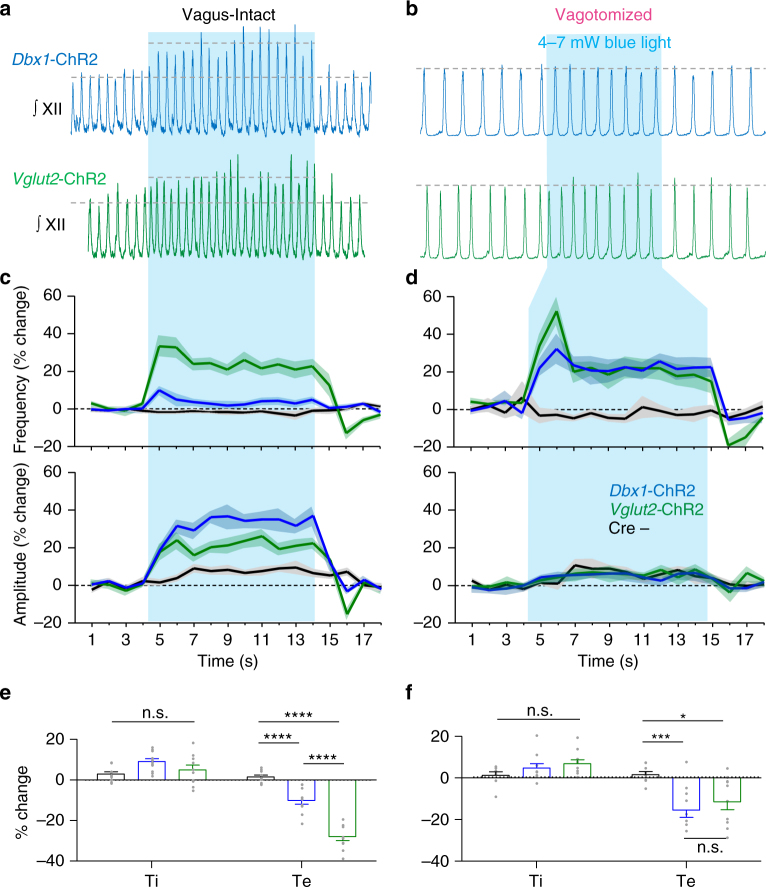Fig. 7.
Excitatory preBötC neurons have a limited ability to generate rapid breathing in vivo. a, b Representative hypoglossal (XII) nerve activity during a continuous 10 s stimulation of the preBötC in Dbx1-ChR2, Vglut2-ChR2, and Cre- control mice with the vagus intact (a) and following vagotomy (b). c, d Average XII nerve burst frequency and amplitude (1 s bins) during continuous light stimulation with the vagus intact (c) (Dbx1, n = 11; Vglut2, n = 10; Cre−, n = 10) and following vagotomy (d) (Dbx1, n = 10; Vglut2, n = 10; Cre−, n = 8; means ± s.e.m.). e, f Average changes in inspiratory and expiratory time (Ti and Te, respectively) during continuous stimulation in vagus-intact (e) and vagotomized (f) mice demonstrating that changes in breathing frequency are primarily the result of reduced Te (mean ± s.e.m.; two-way ANOVA and Bonferonni’s multiple comparisons test; **p < 0.01, ***p < 0.001, ****p < 0.0001)

